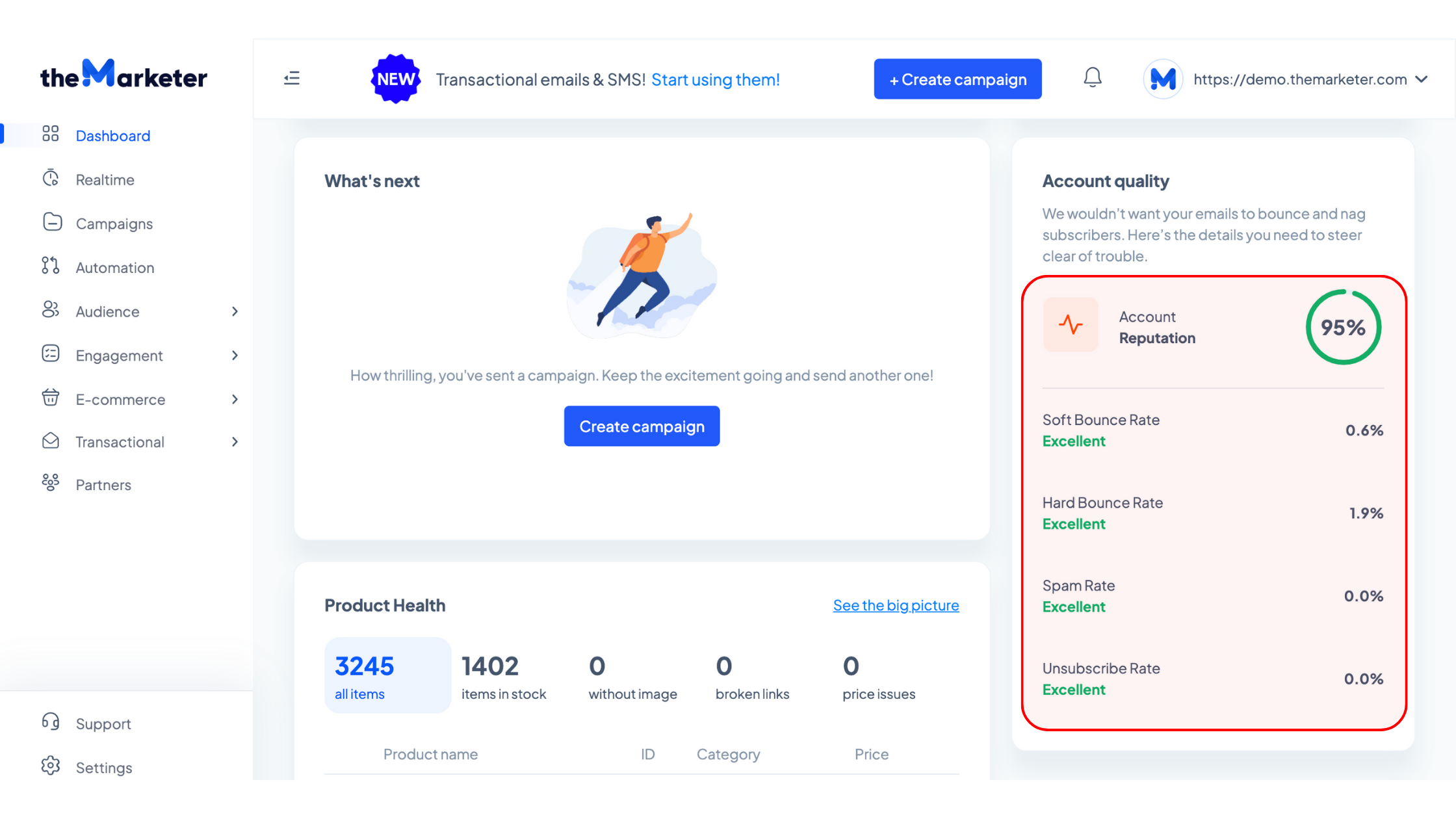/ Knowledge base /
Understanding Email Bounces: Hard vs. SoftUnderstanding Email Bounces: Hard vs. Soft
If you're the kind who diligently checks their dashboard regularly, you're probably also keeping an eagle eye on your Account Reputation. And sometimes, especially when you're sending out a newsletter campaign to a large number of subscribers, you might have noticed your Soft Bounce Rate increasing. Before pulling the panic cord, let's discuss Soft and Hard bounces: what they are, why they happen, and what you can do to keep an impeccable Account Reputation.

Hard Bounces: The Undeliverable Messages
Hard bounces occur when an email is permanently undeliverable. This could happen for several reasons, such as:
- An Invalid Address: The recipient's email address is incorrect or no longer valid.
- A Blocked Email: The email is blocked by the recipient's email server, possibly due to their policy settings.
- A Non-Existent Domain: The domain part of the email address (after "@") is incorrect or inactive.
Soft Bounces: The Temporarily Unreachable
Soft bounces happen when the emails are temporarily undeliverable. The address is valid, the domain exists, and the server is giving you the green light. However, there are other reasons why your message can't get through, including:
- A Full Mailbox: The recipient's inbox is full, preventing your email from being delivered.
- Server Issues: The recipient’s email server might be down or experiencing problems.
- Large Email Size: The email is too large for the recipient's server to process.
Why Understanding Bounces Matters
Distinguishing between hard and soft bounces is crucial for maintaining a healthy email list and achieving optimal email deliverability. Removing hard bounces from your list helps you keep a clean sender reputation. Monitoring soft bounces, on the other hand, can indicate potential issues with your email content or delivery strategy.
Quick Tips for Managing Bounces
- Regular Clean-Up: Consistently remove hard bounces from your list (learn more about keeping your list clean here).
- Monitor Soft Bounces: Treat repeated soft bounces from the same address as hard bounces.
- Optimize Email Size: Ensure your emails are of a manageable size.
Conclusion: Steer Clear of Bounce-Related Troubles
In email marketing, understanding and managing email bounces is crucial. By strategically measuring and addressing them, you can safeguard your Account Reputation and ensure your email marketing efforts are successful and impactful.
